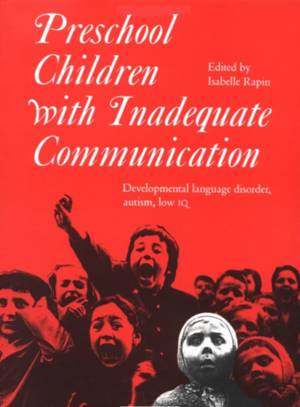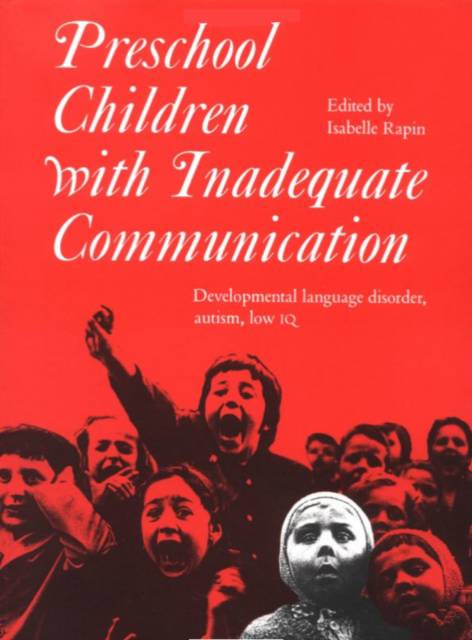
- Afhalen na 1 uur in een winkel met voorraad
- Gratis thuislevering in België vanaf € 30
- Ruim aanbod met 7 miljoen producten
- Afhalen na 1 uur in een winkel met voorraad
- Gratis thuislevering in België vanaf € 30
- Ruim aanbod met 7 miljoen producten
Zoeken
Preschool Children with Inadequate Communication
Developmental Language Disorder, Autism, Low IQ
€ 115,45
+ 230 punten
Omschrijving
It is often difficult to decide whether a preschool child who does not communicate effectively has a developmental disorder limited to language, has behaviors that indicate autism with or without mental deficiency, or across-the-board mental deficiency without autistic features. All of these disorders denote abnormal brain development, but standard medical and neurologic examinations and tests such as brain imaging, EEGs, and chromosome and chemical tests rarely provide an answer. Careful attention to the child's language and behavior, ability to play creatively, and analysis of neuropsychologic tests and language are much more informative for arriving at a correct diagnosis. This is one of the largest multidisciplinary studies to have considered the problem of making a diagnosis among these often confusing and not easily assessable young children. It considers explicitly the practical consequences of using different criteria for making a diagnosis.
Specificaties
Betrokkenen
- Uitgeverij:
Inhoud
- Aantal bladzijden:
- 315
- Taal:
- Engels
- Reeks:
- Reeksnummer:
- nr. 139
Eigenschappen
- Productcode (EAN):
- 9781898683070
- Verschijningsdatum:
- 28/06/1996
- Uitvoering:
- Hardcover
- Formaat:
- Genaaid
- Afmetingen:
- 179 mm x 246 mm
- Gewicht:
- 943 g

Alleen bij Standaard Boekhandel
+ 230 punten op je klantenkaart van Standaard Boekhandel
Beoordelingen
We publiceren alleen reviews die voldoen aan de voorwaarden voor reviews. Bekijk onze voorwaarden voor reviews.










